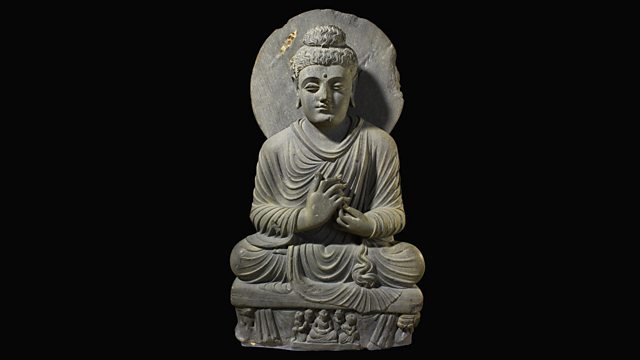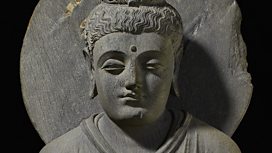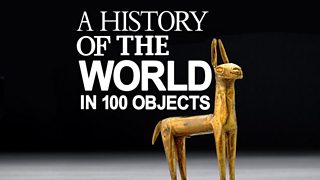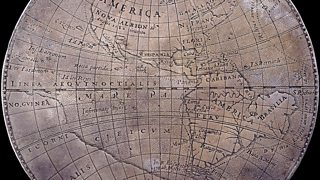Seated Buddha from Gandhara
In a week exploring how great religions created images to express the divine, Neil MacGregor tells the story of one of the world's best known religious images, that of the Buddha
This week the history of the world as told through one hundred objects is looking at how the world's great religions began trying to find the perfect way to visually express the divine, less than 2000 years ago.
Today, Neil MacGregor looks at how a stone sculpture from modern day Pakistan can tell us about how Buddhism set about creating the classic image to represent the real life Buddha who lived and roamed around North India in the 5th Century BC. It was not until over five hundred years later when the classic seated image of the Buddha was first formulated. Before then the Buddha was represented only by symbols. How did the Buddha image come about and why do we need such images? The Dalai Lama's official translator, Thupten Jinpa, and the historian Claudine Bautze-Picron help explain.
Producer: Anthony Denselow
Last on
More episodes
Previous
You are at the first episode
![]()
Discover more programmes from A History of the World in 100 Objects about religion
About this object
Location: Pakistan
Culture: Buddhist World
Period: 2nd - 3rd century AD
Material: Stone
听
This is one the first images of the Buddha ever created. It shows him in an enlightened state, wearing monk's robes and seated in the lotus position. The position of his hands indicates that he is revealing the dharma, the 'way' of his teaching. This statue would have sat in front of a stupa - a domed structure that enclosed the Buddha's ashes. Pilgrims used statues like this to contemplate the Buddha's teachings before they visited his relics.
When were the first images of the Buddha created?
Images of the Buddha were not created until over 500 years after his death. The Buddha was an Indian prince who lived around 400 BC. He became a Buddha - an 'Enlightened One' - through comprehending the roots of human suffering while living an ascetic life. Buddhism spread from India along the Silk Road and by sea, but it was not until AD 0 - 100 that the first images of the Buddha were created. Before that the Buddha was represented by symbols such as his footprints.
Did you know?
- The Buddha's seated posture refers to the moment just before he receives enlightenment.
The awakening
By Thupten Jinpa, Buddhist translator
听
Images of the Buddha have very important significance. On one level, by venerating and revering the image of the Buddha, the practising Buddhists are also remembering the historical teacher 鈥� the Buddha. In fact in Tibetan we often refer to the Buddha as The Teacher, and by venerating the image of the Buddha we are honouring him, his memory. Also the image of the Buddha reminds you of the potential of awakening that lies in all of us. This is particularly true of the Mahayana Buddhists where one of the key ideas is the presence of the Buddha nature, the seed for enlightenment that exists naturally in all of us. So the image of the Buddha inspires the religious devotee and reminds him or her of that natural potential that exists in us.
This particular form of Buddha is very significant because it symbolises the Buddha鈥檚 awakening. So the left palm resting on his lap symbolises the Buddha in a meditative state, in which he is experiencing the awakening state, while the right palm in the gesture of touching the ground symbolises the calling up of the earth to bear witness to this event which is the principal source of inspiration for all the Buddhists. In actual fact you can look at the whole history of Buddhist thought as an attempt to try to understand and articulate the content of this one event 鈥� which is the Buddha鈥檚 enlightened awakening under the Bodhi tree.
Transcript
Broadcasts
- Mon 31 May 2010 09:45麻豆官网首页入口 Radio 4 FM
- Mon 31 May 2010 19:45麻豆官网首页入口 Radio 4
- Tue 1 Jun 2010 00:30麻豆官网首页入口 Radio 4
- Mon 8 Mar 2021 13:45麻豆官网首页入口 Radio 4
Featured in...
![]()
Religion—A History of the World in 100 Objects
A History of the World in 100 Objects - objects related to religion.
Podcast
-
![]()
A History of the World in 100 Objects
Director of the British Museum, Neil MacGregor, retells humanity's history through objects





